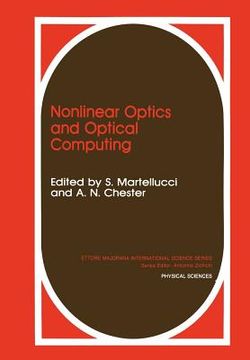Share
Nonlinear Optics and Optical Computing (in English)
Martellucci, S. ; Chester, A. N. (Author)
·
Springer
· Paperback
Nonlinear Optics and Optical Computing (in English) - Martellucci, S. ; Chester, A. N.
$ 52.09
$ 54.99
You save: $ 2.90
Choose the list to add your product or create one New List
✓ Product added successfully to the Wishlist.
Go to My WishlistsIt will be shipped from our warehouse between
Friday, July 12 and
Monday, July 15.
You will receive it anywhere in United States between 1 and 3 business days after shipment.
Synopsis "Nonlinear Optics and Optical Computing (in English)"
The conference "Nonlinear Optics and Optical Computing" was held May 11-19, 1988 in Erice, Sicily. This was the 13th conference organized by the International School of Quantum Electronics, under the auspices of the "Ettore Majorana" Center for Scientific Culture. This volume contains both the invited and contributed papers presented at the conference, providing tutorial background, the latest research results, and future directions for the devices, structures and architectures of optical computing. The invention of the transistor and the integrated circuit were followed by an explosion of application as ever faster and more complex microelectronics chips became available. The information revolution occa- sioned by digital computers and optical communications is now reaching the limits of silicon semiconductor technology, but the demand for faster com- putation is still accelerating. The fundamental limitations of information processing today derive from the performance and cost of three technical factors: speed, density, and software. Optical computation offers the potential for improvements in all three of these critical areas: Speed is provided by the transmission of impulses at optical veloc- ities, without the delays caused by parasitic capacitance in the case of conventional electrical interconnects. Speed can also be achieved through the massive parallelism characteristic of many optical computing architec- tures; Density can be provided in optical computers in two ways: by high spatial resolution, on the order of wavelengths of light, and by computa- tion or interconnection in three dimensions.
- 0% (0)
- 0% (0)
- 0% (0)
- 0% (0)
- 0% (0)
All books in our catalog are Original.
The book is written in English.
The binding of this edition is Paperback.
✓ Producto agregado correctamente al carro, Ir a Pagar.

